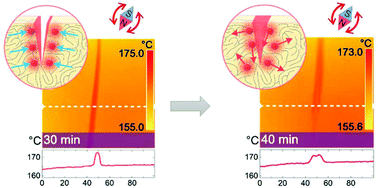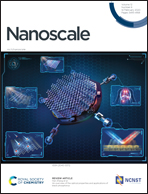Defect-targeted self-healing of multiscale damage in polymers†
Abstract
Self-healing materials capable of restoring functionality in response to damage are expected to gain prolonged service lifespan. Yet the ability to repair damage of diverse length scales which is demanded for the survival of highly capricious and uncontrolled damage modes has not been demonstrated with current self-healing approaches. Herein the repeatable self-healing of multiscale damage ranging from nanometer to millimeter is achieved in thermoplastic polymers through defect-targeted heating and welding. The key to the ability to deal with multiscale damage is the automatic and targeted transport and assembly of superparamagnetic nanoparticles toward the defect site. This allows the concentrated nanoparticles to deliver a high heating power under an oscillating magnetic field and locally fuse the matrix, whereas the overall dimensional integrity of the material is well preserved. Moreover, as the polymer melt drives progressively into the open volume of the crack, the nanoparticles keep migrating with the edge of the crack until the fractured portions are united. The cracking–healing cycle can be repeated 100 times with a constantly high healing efficiency above 95%. This work sheds light on the new design of self-healing materials where the ability to deal with complex damage modes represents a key merit to prompt real-world applications.



 Please wait while we load your content...
Please wait while we load your content...